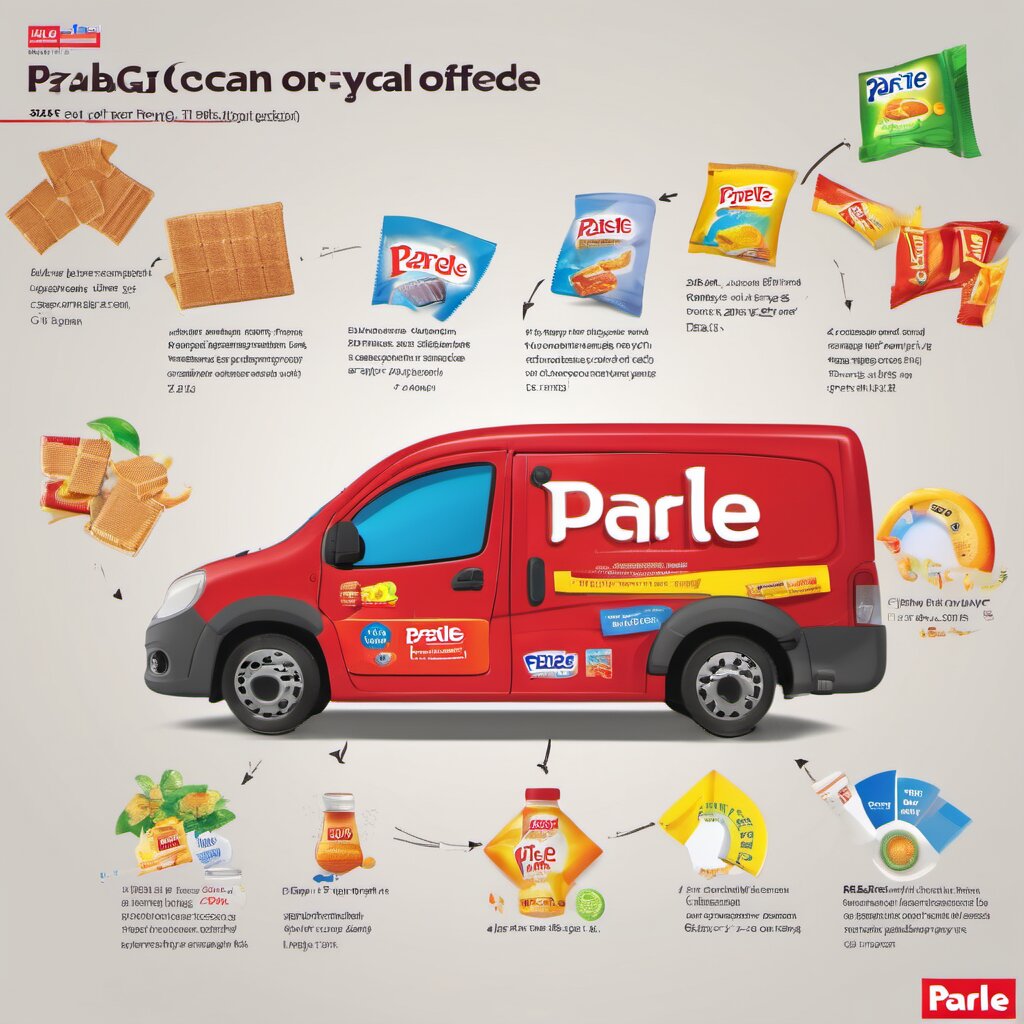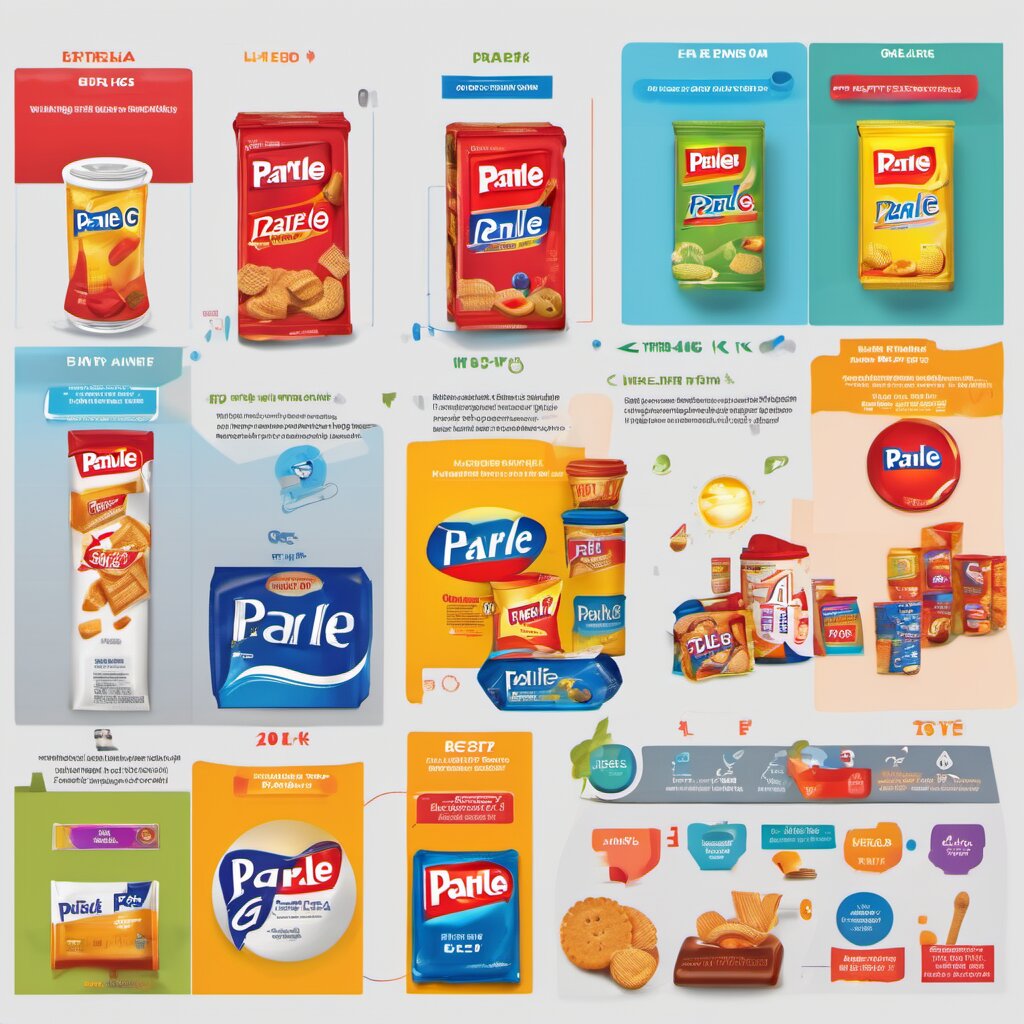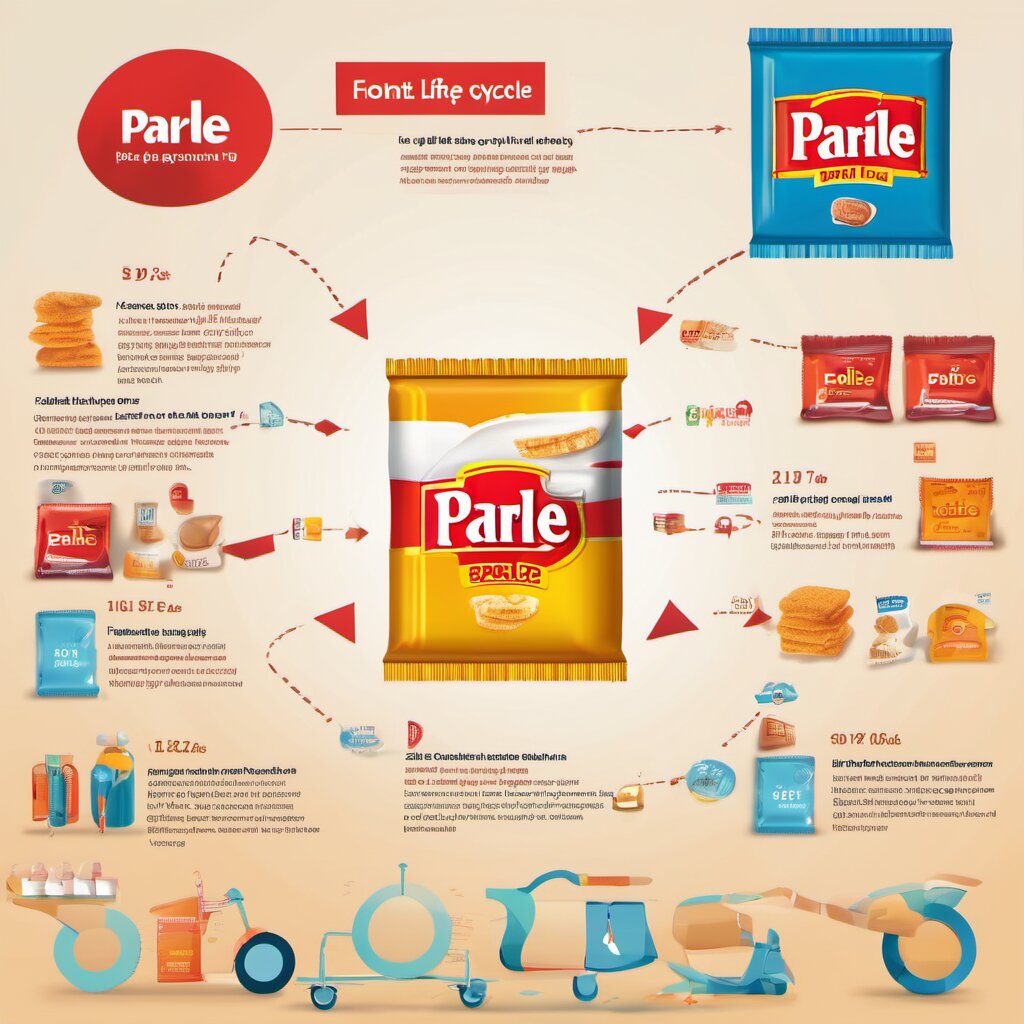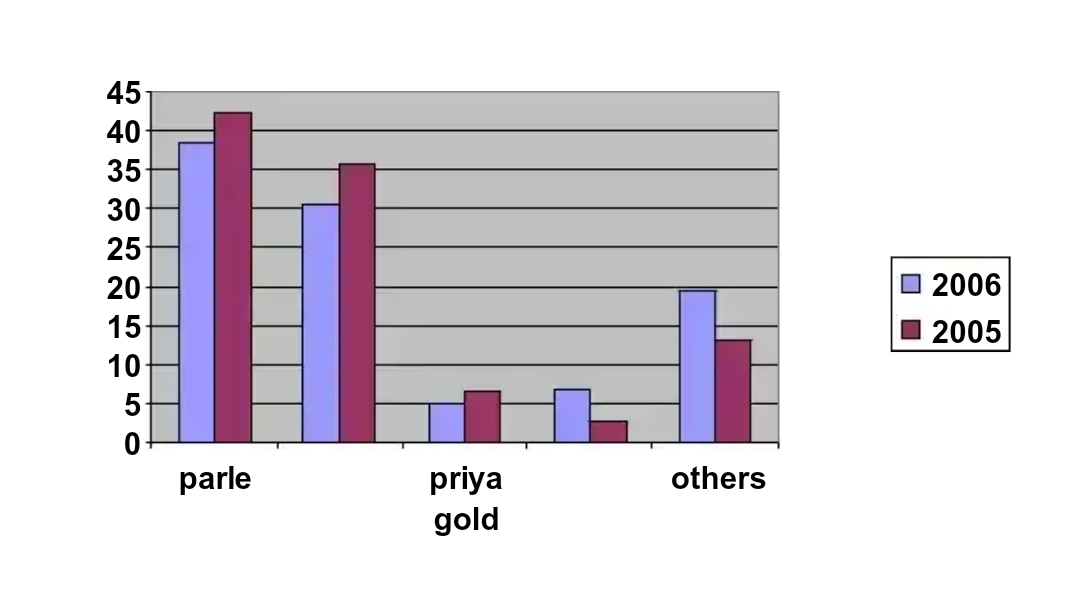Product Life cycle of Parle G
Well recognized by its iconic white and yellow wax paper wrapper with the depiction of ayoung girl covering the front Parle-G has been the undisputed market leader in the glucose biscuit market for many decade.
For over 65 years, Parle G has been a part of the lives of every Indian. From frenetic cities laid back villages, Parle G has nourished, strengthened and delighted millions.Filled with the goodness of milk and wheat, Parle G is not just a treat for the taste buds, buta source of strength for both body and mind, making it truly Hindustan Ki Taakat.

THE JOURNEY OF PARLE-G GOES AS:
A long time ago, when the British ruled India, a small factory was set up in the suburbs of of Mumbai city, to manufacture sweets and toffees. The year was 1929 and the market was dominated by famous international brands that were imported freely. Despite the odds and unequal competition, this company called Parle Products, survived and succeeded, by adhering to high quality and improvising from time to time.
A decade later, in 1939, Parle Products began manufacturing biscuits, in addition to sweets and toffees. Having already established a reputation for quality, the Parle brand name grew in strength with this diversification. Parle Glucose and Parle Monaco were the first brand of biscuits to be introduced, which later went on to become leading names for great taste and quality.
Parle fought to make biscuits affordable, despite World War II. -Parle-G has been a strong household name across India. The great taste, high nutrition, and the international quality,makes Parle-G a winner. No wonder, it’s the undisputed leader in the biscuit category for decades. Parle-G is consumed by people of all ages, from the rich to the poor, living incities & in villages. While some have it for breakfast, for others it is a complete wholesome meal. For some it’s the best accompaniment for tea, while for some it’s a way of getting charged whenever they are low on energy. Because of this, Parle-G is the world’s largest selling brand of Biscuits.
Launched in the year 1939, it was one of the first brands of Parle Products. It was called Parle Gluco Biscuits mainly to cue that it was a glucose biscuit. It was manufactured at the Mumbai factory, Vile Parle and sold in units of half and quarter pound packs. They expand their business very quickly and in right manner.
The incredible demand led Parle to introduce the brand in special branded packs and in larger festive tin packs. By the year 1949, Parle Gluco biscuits were available not just in Mumbai but also across the state. It was also sold in parts of North India. By the early 50s,over 150 tonnes of biscuits were produced in the Mumbai factory. Looking at the success of Parle-G, a lot of other me-too brands were introduced in the market. And these brands had names that were similar to Parle Gluco Biscuits so that if not by anything else, the consumer would err in picking the brand. This forced Parle to change the name from Parle Gluco Biscuits to Parle-G.

Originally packed in the wax paper pack, today it is available in a contemporary, premium BOPP pack with attractive side fins. The new airtight pack helps to keep the biscuits fresh and tastier for a longer period.
Parle-G was the only biscuit brand that was always in short supply. It was heading towards becoming an all-time great brand of biscuit. Parle-G started being advertised in the 80’s. It Was advertised mainly through press ads. The communication spoke about the basic benefits of energy and nutrition.
In 1989 Parle-G released its Dadaji commercial, which went on to become one of the most popular commercials for Parle-G. The commercial was run for a period of 6 years.
Parle-G grew bigger by the minute. Be it the packs sold, the areas covered or the number of consumers. It became a part of the daily lives of many Indians. It wasn’t a biscuit any more.It had become an icon. The next level of communication associated the brand with the positive values of life like honesty, sharing and caring.
In the year 1997, Parle-G sponsored the tele-serial of the Indian superhero, Shaktimaan that went on to become a huge success. The personality of the superhero matched the overall superb benefits of the brand. Parle extended this association with Shaktimaan and gave away a lot of merchandise of Shaktimaan ,which was supported by POS and press communication. The children just could not get enough of Parle-G and Shaktimaan.
In the year 2002, it was decided to bring the brand closer to the child who is a major consumer. A national level promo – `Parle-G Mera Sapna Sach Hoga’ was run for a period of 6 months. The promo was all about fulfilling the dreams of children. There were over 5lakh responses and of that, over 300 dreams were fulfilled. Dreams that were fulfilled ranged from trips to Disneyland at Paris & Singapore; meeting their favorite film star Hrithik Roshan free ride on a chartered plane; 20 scholarships worth Rs 50,000; a special cricket coaching camp with the Australian cricketer – Ricky Ponting; etc.
Parle-G continues to climb the stairs of success. Take a look at the global market where itis being exported. First came the Middle East then USA followed by Africa and then Australia. An Indian brand, that’s exported to almost all parts of the world. After all . that’s what you would expect from the Parle-G World’s Largest Selling Biscuit.
THE PRODUCT LIFE CYCLE OF PARLE-G
A product’s life cycle can be divided into 4 main stages – Introduction, Growth, Maturity And Decline.
(I) Introduction Stage: Product Life cycle of Parle G
In the introduction stage is a stage where there are one or few relatively indifferent products and the firm generally use high price, assuming skim price strategy for a high profit margin as the early adopters buy the product and the firm seeks to recoup development cost quickly. In some cases a penetration price strategy is used and introductory prices are set low to gain market share rapidly. The distribution is selective and scattered as the firm commences implementation of the distribution plan and the promotion is aimed at building brand awareness.
Parle-G was introduced in the year 1939 even before independence when the market was dominated by famous international brands that were imported freely and no Indian brands.Parle-G followed the price skimming strategy, thus keeping the price of the product low and thus gained larger market share and lots of attention of the masses. In the introductory stage the paper media was mainly used for advertising but the distribution channel was not that strong as the company’s manufacturing facility was located in Vile-Parle, Mumbai soit was not able to cover larger geographical area but Parle-G performed well in the area covered by it and attracted masses.
(II) Growth Stage: Product Life cycle of Parle G
Growth stage in a product’s PLC is characterized by new product features and packaging options, improvement of product quality, intensive distribution and increased advertising to build brand preference.
Parle-G’s growth stage continued from 1949 to 1997. By the year 1949, Parle Gluco biscuits were available not just in Mumbai but also across the state. It was also sold in parts of North India. By the early 50s, over 150 tonnes of biscuits were produced in the Mumbai Factory. Looking at the success of Parle-G, a lot of other me-too brands were introduced inthe market. And these brands had names that were similar to Parle Gluco Biscuits so that if not by anything else, the consumer would err in picking the brand. This forced Parle to change the name from Parle Gluco Biscuits to Parle-G.
Parle-G was the only biscuit brand that was always in short supply. It was heading towards becoming an all-time great brand of biscuit. Parle-G started being advertised in the 80’s. It Was advertised mainly through press ads. The communication spoke about the basic benefits of energy and nutrition.
In 1989 Parle-G released its Dadaji commercial, which went on to become one of the most popular commercials for Parle-G. The commercial was run for a period of 6 years A Glimpse of the Parle-G dada-ji commercial Parle-G grew bigger by the minute. Be it the packs sold, the areas covered or the number of consumers. It became a part of the daily lives of many Indians. It wasn’t a biscuit any more.It had become an icon.
The next level of communication associated the brand with the positive values of life like honesty, sharing and caring.In this stage also the price of the Parle-G biscuits were kept low following the sell brand not price motto. The company however used differentiated pricing strategy as per the geography as the freight cost for reaching remote areas was high.
the entry of the other brands due to the customer confidence and loyality to the brand and also thru its vast advertising regime. The company still followed the penetration strategy keeping high quality maintaining low price. Through out its maturity phase Parle-G wider reach through different medium-education, hospital, army, railway & bus, donations, sports, NGOs. Its brand value compelled suppliers to sell Parle-G at low commission. Nearly 1500wholesalers, catering to 425000 retail outlets directly or indirectly, Parle-G had availability in remote places even in the villages having population of 1500.Challenges Faced in the maturity stage and How they were Met.

A Glimpse of the Parle-G dada-ji commercial
Parle-G grew bigger by the minute. Be it the packs sold, the areas covered or the number of consumers. It became a part of the daily lives of many Indians. It wasn’t a biscuit any more.It had become an icon. The next level of communication associated the brand with the positive values of life like honesty, sharing and caring.In this stage also the price of the Parle-G biscuits were kept low following the sell brand not price motto. The company however used differentiated pricing strategy as per the geography as the freight cost for reaching remote areas was high.The company did not face much of the competition and challenges in this stage.
(III) Maturity Stage: Product Life cycle of Parle G
Maturity stage is the most profitable stage. Sales continue to increase at a lower pace.Because brand awareness is strong, advertising expenditure is reduced. Competition may result in decreased market share and/or prices. The distribution channels and incentives to sellers in order to avoid losing shelf space and the promotion is aimed to get competitor’scustomers to switch.The maturity stage for Parle-G started in the year 1997 and continued till 2006.
In this period Parle-G faced stiff competition due to the entry of 3 more glucose biscuits brands, however, the company was not much affected by the entry of the other brands due to the customer confidence and loyality to the brand and also thru its vast advertising regime. The company still followed the penetration strategy keeping high quality and maintaining low price.
Through out its maturity phase Parle-G wider reach through different medium-education, hospital, army, railway & bus, donations, sports, NGOs.
Its brand value compelled suppliers to sell Parle G at low commission. Nearly 1500 wholesalers, catering to 425000 retail outlets directly or indirectly, Parle-G had availability in remote places even in the villages having population of 1500.Challenges Faced in the maturity stage and How they were Met.
- •In the year 1997 Britannia launched its ‘Tiger’ brand and to avoid competition from Britannia and to strengthen its position Parle-G sponsored the tele-serial of the Indian Super Hero, Shaktimaan in this very year, that went on to become a huge success. The personality of the superhero matched the overall superb benefits of the brand. Parleex tended this association with Shaktimaan and gave away a lot of merchandise of Shaktimaan ,which was supported by POS and press communication. The children justcould not get enough of Parle-G and Shaktimaan. And thus the entry of Britannia Tiger was not able affect the brand Parle-G.
- •In the year 2000 Surya Food products launched Priya Gold Brand which was again afailure and didn’t affect the brand Parle.
- •By the year 2002 the company Parle-G took the entry of new brands seriously and decided to strengthen its brand by increasing its advertising and promotional activities.It was decided to bring the brand closer to the child who is a major consumer. National level promo – `Parle-G Mera Sapna Sach Hoga’ was run for a period of 6months. The promo was all about fulfilling the dreams of children. There were over 5lakh responses and of that, over 300 dreams were fulfilled. Dreams that were fulfilled ranged from trips to Disneyland at Paris & Singapore; meeting their favorite film star Hrithik Roshan free ride on a chartered plane; 20 scholarships worth Rs 50,000; a special cricket coaching camp with the Australian cricketer – Ricky Ponting; etc.
- •In June 2003 ITC launched its brand Sunfeast Glucose which was promoted hugely thru T.V. media and was endorsed by Shahruk Khan. Despite of the fact that Parle-Gand Britannia were the only two brands having huge market shares, sunfeast managed to gain considerable market share thru its high brand promotions. But still Parle-G was not affected greatly as people still preferred Parle-G due to its good image in the past so many year and because of the huge price difference in these products. Parle-G was available at Rs. 4 and sunfeast and tiger were sold at Rs. 10 per 100 gms.
- •Due to stiff competition HLL quit its Max Brand in the year 2005
(IV) Decline Stage: Product Life cycle of Parle G
In this stage the sales begin to decline as the market becomes saturated, the product becomes technologically obsolete, or customer tastes change. If the product had developed brand loyalty, the profitability may be maintained longer. Unit costs may increase with the declining production volume and eventually no more profits can be made.
The decline stage of Parle-G started in 2006 and continues till date. The reason of the decline of the so preferred brand is the .50 paise price hike by the firm. Parle-G was sold at Rs.4 for 100gms. and Rs. 2 for 50 gms for almost 12 years. But in the year 2004 Parle-G increased its price to Rs. 4.50 for 100gms. and Rs. 2.50 for 50 gms packs.
This didn’t affect the company initially but slowly the company started loosing its shares and the actual decline started in the year 2006 when the company’s market share dropped from 42.2(2005) to 38.4 (2006) %. By this time Parle hold 52% share in the global market but in Indian market in terms of value, Britannia leads the market with 37% share, followed byParle’s 31.3 % and ITC’s 6.3 %.

Source:
- 10 Best Essential Business Management Techniques You Need to Know
- Maximize Efficiency and Growth: Expert Product and Service Management Solutions
- Why Macroeconomics is the study of the economy as a whole – Best Info
- Understanding Supply and Demand: A Comprehensive Explanation
- The Nature and Scope of Macroeconomics- A Best Guide
FAQ
What is the life cycle of a product line?
Product life cycle: Introduction, Growth, Maturity, Decline.
What are the new products of Parle-G?
As of my last knowledge update in January 2022, I don’t have specific information on Parle-G’s new products. Check their latest offerings on their official website or local stores for updated details.
When did Parle-G start production?
Parle-G started production in 1939.
